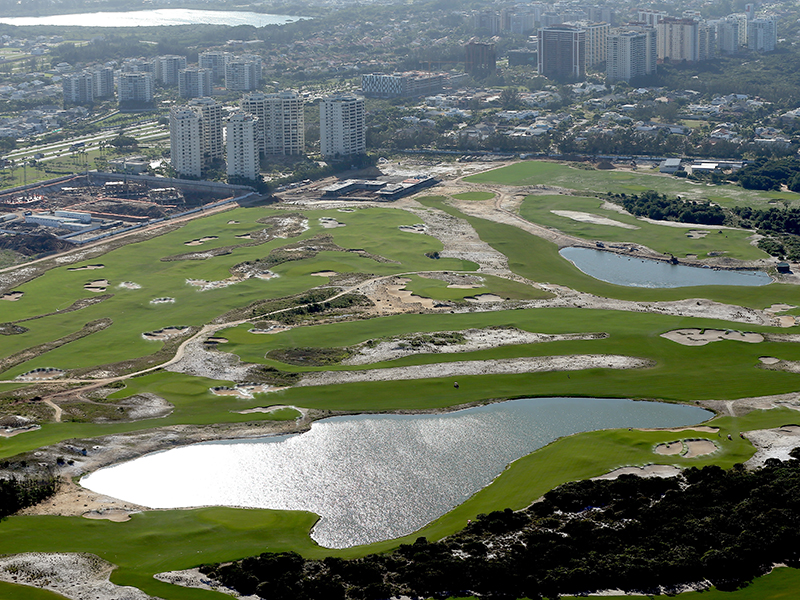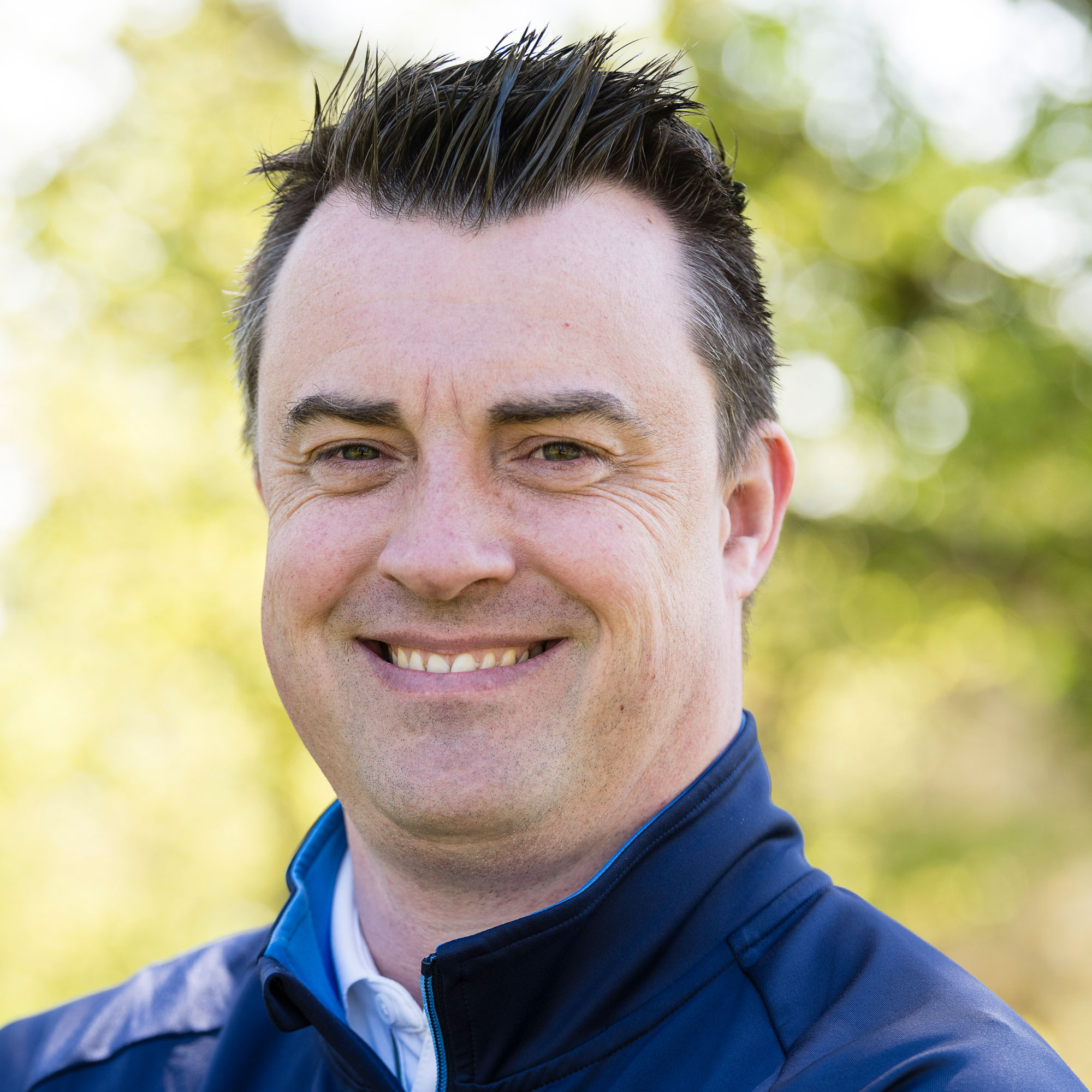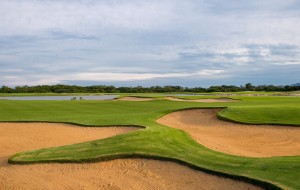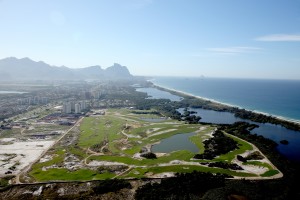Olympic Golf Course Controversy


With only nine months to go, the world’s first Olympic Golf Course has been completed in Rio de Janeiro. Mayor Eduardo Paes officially handed over it over 22 November to the game organizers, stating, “the course is ready for the Olympic Games.” After 112 years, the sport will be making an appearance in the 2016 games held in Brazil. The pristine 7,290-yard course lies in the middle of undeveloped land on the Marapendi natural reserve. The links-style course, that seems as though it dropped from the sky, has caused much controversy in the country.
With only nine months to go, the world’s first Olympic Golf Course has been completed in Rio de Janeiro. Mayor Eduardo Paes officially handed over it over 22 November to the game organizers, stating, “the course is ready for the Olympic Games.”
After 112 years, the sport will be making an appearance in the 2016 games held in Brazil.
The pristine 7,290-yard course lies in the middle of undeveloped land on the Marapendi natural reserve. The links-style course, that seems as though it dropped from the sky, has caused much controversy in the country.

Get the Golf Monthly Newsletter
Subscribe to the Golf Monthly newsletter to stay up to date with all the latest tour news, equipment news, reviews, head-to-heads and buyer’s guides from our team of experienced experts.
Part of the course is built on an environmentally protected area in Rio’s west suburb, Barra da Tijuca. This part of land in which the mega-construction course stands is also a part of the country’s Atlantic Forest, where many endangered species live.
Many are coming to defense of the various plants and animals being affected. Recommendations from The International Golf Federation came to move the new construction to Rio’s existing two golf courses, Itanhanga or São Paulo.
Despite activists’ protests, Mayor Eduardo Paes denies that the construction comes with any environmental concerns. He defended the course after lawsuits were filed by citing several environmental studies and a license obtained in 2007 and 2008, respectively.
“Here we have restinga [salt marsh] vegetation. We will plant 625,000 seedlings and increase the salt marsh vegetation area of 94,000 to 65,000 square meter. It is nonsense, a lie, to say that an environmental crime is being committed,” he said.

The course moved to where it currently stands because it is closer to the athletes’ village.
“It had to be a public field and with a building permit. The adaptation of Itanhanga would have cost $25 million, and this area cost $26 million. So, it was decided by the Olympic Committee and the International Golf Federation that Barra would be the better place.”
Paes was also put under investigation in March 2015 to assess if any administrative misconduct with the course’s construction company had occurred.
Other Olympic venues are still underway in Rio, many being pushed back several months because of Brazil’s lack of funds. It is doubtful that all planned infrastructures will be completed on time.
The Olympics are acting as a way to revitalize Brazil amid their economic recession. The golf course will be open to the public after the 2016 games in hopes to introduce the recreational sport to the country.

Tom Clarke joined Golf Monthly as a sub editor in 2009 being promoted to content editor in 2012 and then senior content editor in 2014, before becoming Sports Digital Editor for the Sport Vertical within Future in 2022. Tom currently looks after all the digital products that Golf Monthly produce including Strategy and Content Planning for the website and social media - Tom also assists the Cycling, Football, Rugby and Marine titles at Future. Tom plays off 16 and lists Augusta National (name drop), Old Head and Le Touessrok as the favourite courses he has played. Tom is an avid viewer of all golf content with a particularly in depth knowledge of the pro tour.
-
 Hye-Jin Choi Facts: 10 Things To Know About The LPGA Tour Pro
Hye-Jin Choi Facts: 10 Things To Know About The LPGA Tour ProHye-Jin Choi had a glittering amateur career, and she’s taken that into her professional journey, with a host of wins – here are 10 things to know about her
By Mike Hall
-
 Yan Liu Facts: 10 Things To Know About The LPGA Tour Pro
Yan Liu Facts: 10 Things To Know About The LPGA Tour ProYan Liu has been making solid progress in her professional career – here are 10 things to know about the LPGA Tour golfer
By Mike Hall